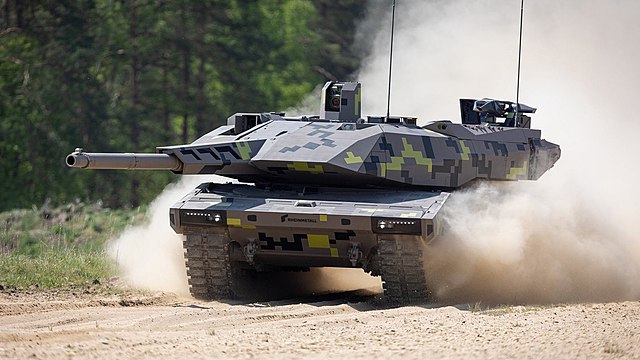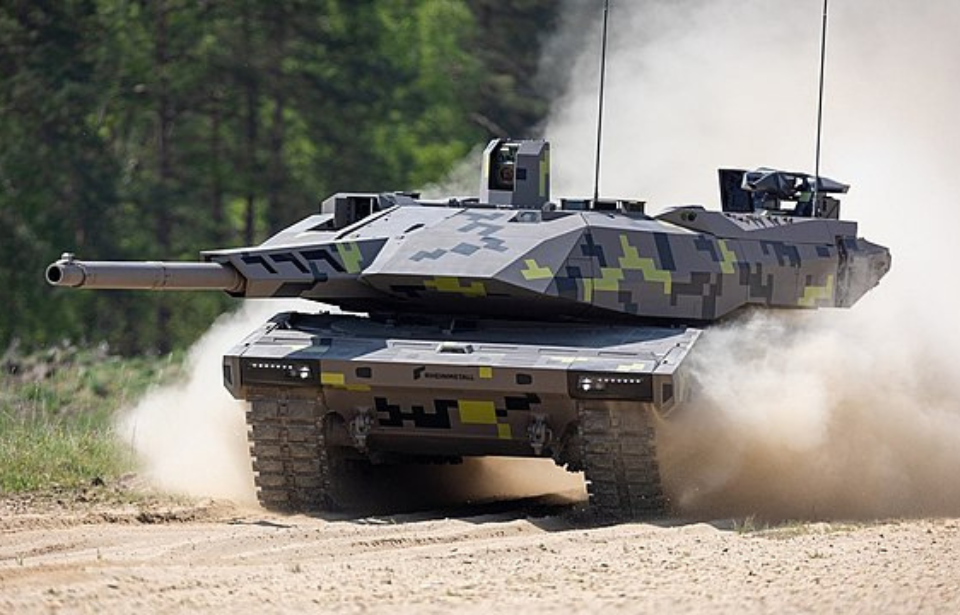Arms manufacturer Rheinmetall has revealed its new main battle tank (MBT). The company unveiled the vehicle – the Panther KF51 – at Eurosatory 2022, touting it as among the most advanced tanks on the market. It features a fully-digitized design that is capable of collecting and disseminating information on the battlefield, as well as a new 130 mm smoothbore gun to provide increased firepower.
Development of the Panther KF51
According to Rheinmetall, the Panther KF51 is a “radically new” MBT concept. Designed for the export market and built through the use of the company’s own funds, it delivers “the highest lethality on the battlefield, combined with an integrated survivability concept and connected by a fully digitised NGVA data backbone to enable next-generation operational capabilities and automation.”
The Panther’s combat weight measures in at around 59 tons, allowing for greater mobility than current MBTs, and it has a range of 500 km. Its chassis uses components of the Leopard 2‘s hull, while the turret is a completely new design, which allows for just three crewmen to operate the vehicle: a commander, a gunner and a driver.
Two crew stations are located in the chassis, with an overall total of four. The set-up was designed to ensure crew members can operate the weapons and sensors in each individual station, to “take over tasks and roles from others while still retaining full functionality.” It also allows for the introduction of Human-Machine Training and unmanned turret options.
Packed with firepower
The Panther KF51 has three different guns to provide fire support on the battlefield. The primary weapon is the 130 mm Future Gun System (FGS) L52 smoothbore gun, which was designed by Rheinmetall specifically for the tank. Its autoloader is connected to two revolver-type magazines, which are designed to hold 10 rounds each of kinetic energy (KE) rounds, as well as programmable airburst ammunition, with corresponding practice rounds.
The 130 mm FGS is able to to produce a 50 percent longer kill range than the typical 120 mm gun used by other MBTs, and it can also fire Hero-120 loitering munition, which expands the Panther’s long-range strike capabilities to include the targeting of non-line-of-sight targets.

The tank’s secondary weapon is a 12.7 mm co-axial machine gun, which is equipped with 250 ready rounds, to provide mid-range support and defense. There’s also a fully-automated “Natter” 7.62 mm Remotely Controlled Weapon Station (RCWS) toward the rear of the turret roof. Its integration provides improved flexibility when it comes to drone defense.
All three guns are connected, via the tank’s digitized architecture, to the fire control computer and targeting sighting, including laser rangefinders and day/night sights for the crew. This allows for not just the completion of killer-killer and hunter-killer operations, but “seamless target engagement and future AI decision support.”
The Panther KF51’s integrated survivability concept
The Panther KF51 is the first MBT to adopt “an integrated survivability concept of on and off-platform sensors coupled with active, reactive and passive protection and a dedicated top attack system.” The active layer of its defense protects against anti-tank missiles and KE threats; the reactive portion neutralizes double shaped charges; and the passive layer stops other elements. The top attack protection system (TAPS) guards against aerial threats.
When paired with the ROSY smoke observance system, the Panther is seemingly impenetrable.
More from us: PzH 2000: One of the Most Powerful Artillery Systems Ever Developed
A primary way in which the tank protects itself, however, is to ensure it strikes first. This is accomplished through pre-shot detection. As well, the integration of modern BMS and other communication systems enables the crew to operate in collaborative combat environments, ensuring the MBT has support from other military vehicles anAQd external weaponry.
